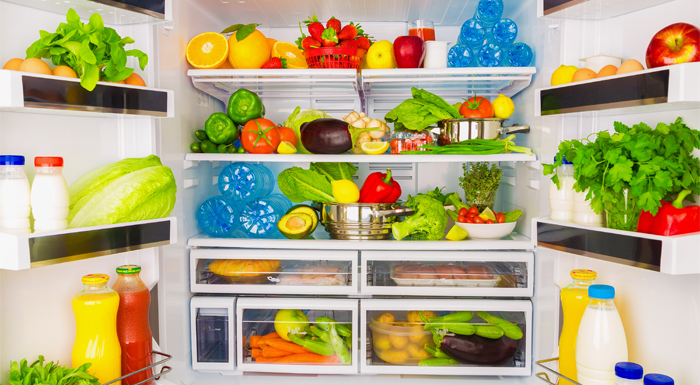Keeping your food fresh isn’t just about taste—it’s about health, convenience, and saving money. Proper storage prevents spoilage, reduces waste, and ensures you always have ingredients ready for your favorite meals. Whether you’re a seasoned cook or just starting to organize your kitchen, mastering food storage can make a big difference. Here’s a guide to help your groceries stay fresh longer.
1. Understand the Right Temperature Zones
Your fridge and freezer aren’t just cold spaces—they have specific temperature zones ideal for different foods. The main refrigerator compartment should be kept between 35°F and 38°F (1.6°C to 3.3°C). Freezers should be at 0°F (-18°C) or lower.
Different shelves have slightly different temperatures:
- Top shelves: Best for ready-to-eat foods like dairy, drinks, and leftovers.
- Middle shelves: Ideal for eggs and packaged foods.
- Bottom shelves: The coldest part—perfect for raw meat, poultry, and fish.
- Crisper drawers: Designed for fruits and vegetables, with humidity controls to keep leafy greens crisp and fruits juicy.
2. Store Foods in Airtight Containers
One of the simplest ways to extend freshness is using airtight containers. Exposure to air accelerates spoilage, especially for cut fruits, leftovers, and dry goods like flour or rice. Glass containers with tight lids are ideal—they don’t retain odors and are easy to clean. For pantry items, airtight jars or bins prevent pests and maintain flavor.
3. Separate Ethylene-Producing Foods
Some fruits and vegetables release ethylene gas as they ripen, which can cause nearby produce to spoil faster. Apples, bananas, and avocados are common ethylene producers. Keep them away from leafy greens, berries, and carrots to avoid premature spoilage. Using separate drawers or containers can make a significant difference in longevity.
4. Label and Date Everything
It’s easy to forget how long something has been in the fridge or pantry. Labeling containers with the date of purchase or preparation helps you track freshness. This simple step reduces food waste and ensures you consume items before they go bad. For bulk items, consider portioning them into smaller containers to maintain quality over time.
5. Store Dry Foods Properly
Dry foods like pasta, grains, and cereals need a cool, dry, and dark place. Moisture and heat can cause mold or infestations. Keep items in airtight containers, and avoid storing them near the stove or dishwasher where heat and humidity fluctuate. Rotating your pantry stock regularly also ensures nothing goes to waste.
6. Don’t Overload Your Fridge
A packed refrigerator restricts air circulation, leading to uneven cooling and faster spoilage. Keep your fridge organized, leaving space between items for proper airflow. Use baskets or bins to group similar items, making it easier to find what you need and reducing the time the door stays open.
7. Check Your Appliances Regularly
Even the best storage techniques won’t help if your refrigerator or freezer isn’t functioning properly. Regular maintenance, such as cleaning coils and checking seals, keeps your appliance efficient. If you notice inconsistent temperatures, frost buildup, or unusual noises, it might be time to call a professional. For residents in Utah, refrigerator repair in Ogden services can quickly diagnose and fix problems, ensuring your food stays fresh and safe.
8. Utilize Freezer Wisely
Freezing isn’t just for long-term storage—it’s a great way to preserve freshness. Most cooked meals, bread, and many fruits and vegetables freeze well. Use freezer-safe containers or vacuum-sealed bags to prevent freezer burn. Label everything with the date and contents to avoid mystery meals later.
9. Rotate Your Stock
When putting away groceries, use the “first in, first out” method. Place new items behind older ones to ensure you consume older stock first. This prevents items from sitting forgotten until they spoil. For pantry goods, consider stacking in smaller quantities so older items are at eye level and easily accessible.
10. Keep Your Kitchen Clean
A clean kitchen contributes to longer-lasting food. Regularly wipe down shelves, drawers, and containers to prevent mold, bacteria, and cross-contamination. Check expiration dates periodically and discard anything that shows signs of spoilage.
Final Thoughts
Proper food storage is a simple yet effective way to enhance your kitchen life. By understanding temperature zones, using airtight containers, separating ethylene-producing foods, and keeping appliances in top condition, your groceries will stay fresher for longer. Remember, a little organization and attention goes a long way—not just in taste, but in health and savings too.



